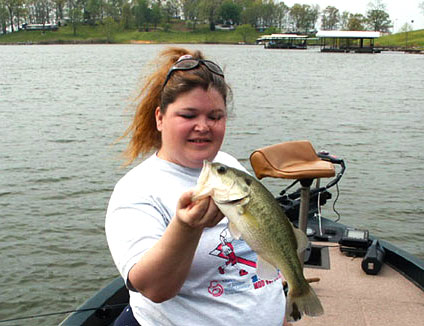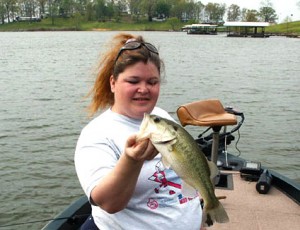
Editor’s Note: This column first appeared in the Greater Ashland Beacon on Aug. 17, 2011.
By Chris Erwin
If you have been out on the water in the last few weeks, you may be wondering where the fish are and how in the world, you can catch them. Catching bass in the heat of the summer is the test that separates the occasional angler from the die-hard fisherman who has figured out fish movements and how they can use that knowledge to locate fish.
Bass do the same thing every year as the environment changes with the seasons. Now that we are past the post-spawn period and the water temperature has crept into the mid to high 80’s, bass will retreat to deeper water. To be more specific, in our area we are talking about 10 to 15 feet.
While not considered deep when you compare it to winter time movements, it is deep enough to get bass back in the comfort zone. This predictable move can be verified using a fish finder or depth finder. At this depth bass can stage and wait for shad to move into their strike zone. Casting the banks during this time will usually only produce small fish and at times will be completely fruitless.

This is a good time to develop a deep water approach to your fishing game. The artificial lures that you want to use will vary according to how active the fish are, but jigs, spinnerbaits, plastic worms, deep diving cranksbaits and weighted minnow-type baits should be part of your deep-water pattern arsenal.
The prime locations for staging fish are outside bends of creeks or river channels, primary points, flats that drop off into deep water and along weed edges. Slow down your presentation – work these areas making sure your bait gets in the 10 to 15 foot range. Once you catch a few fish, a pattern will start to develop and you can then spend your time concentrating on the most productive areas.
It’s a myth that bass quit biting in the hot summer months. Once their metabolic rate is high they must feed to sustain their energy level. Understanding bait fish movements after the post spawn period will keep you on the fish.
Shad is a primary food source and there are two types of shad that dominate here in Kentucky – the Gizzard and Threadfin shad. They are very different but they have one thing in common: They both feed on plankton. It’s the plankton that sets the food chain in motion, and is the key to understanding where the shad will be as we start the transition from late summer to early fall.
It’s not my aim to get into the science of plankton but it’s worth reporting my observations about what occurs in our lakes that affect fish movements. During the hot summer months when the water is clear plankton flourishes in water deep enough to be comfortable for both shad and predator fish. While you may see shad come to the top following the plankton in the hot summer, this usually occurs only in the late evening. The plankton is photosensitive and will come to the top during low light periods. However, the predator fish will not pursue them until the surface temperature falls into the comfort zone.
The movement of plankton and the fact that water temperatures tend to fall during low light periods support the facts that early and late fish activity is not uncommon, but to be successful during the hot days of summer you must fish where the bait naturally occurs.
Till next time,
Keep a tight line and take a kid fishing!




Be the first to comment